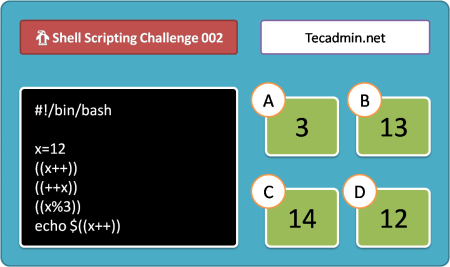Bash is a powerful and versatile Unix shell that has become the default command-line interface on most Linux distributions and macOS. Shell scripting is an essential skill for system administrators, programmers, and anyone who wants to automate tasks or improve their workflow. One of the key features of Bash is its “set” options, which allow you to modify the behavior of your scripts and make them more efficient and robust. In this article, we’ll explore the most important set options and demonstrate how to use them effectively in your shell scripts.
Here is the quick summy for the set options in Bash scritps:
- errexit (-e): Exit on non-zero exit status.
- nounset (-u): Exit on uninitialized variables.
- pipefail (-o pipefail): Exit on non-zero exit status in pipelines.
- xtrace (-x): Print commands before execution for debugging purposes.
These set options can be combined in a single command to enable multiple options simultaneously. The more you practice using these options in your scripts, the more confident you’ll become in writing efficient and effective Bash scripts.
1. Understanding Set Options
Set options are configuration settings that alter the way Bash behaves when executing a script. These options can be enabled or disabled using the “set” command, which takes the following general form:
1 | set -o option_name |
To enable an option, you can either use the short form (a single dash and the option letter) or the long form (two dashes and the option name). To disable an option, simply precede the option letter or name with a plus sign (+) instead of a dash (-).
For example, to enable the “nounset” option, you can use either of these commands:
1 2 | set -u set -o nounset |
And to disable it:
1 2 | set +u set +o nounset |
2. Common Set Options and Their Uses
Here are some of the most useful set options that can enhance your Bash scripts:
a) errexit (-e)
This option makes your script exit immediately if any command returns a non-zero exit status, which typically indicates an error. This helps you catch errors early and prevent them from causing further problems down the line.
Example:
1 2 3 4 5 | #!/bin/bash set -e cp non_existent_file.txt /tmp echo "This line will not be executed if the previous command fails." |
b) nounset (-u)
With this option enabled, your script will exit if you try to use an uninitialized variable. This is useful for detecting typos or preventing the accidental use of unset variables.
Example:
1 2 3 4 5 | #!/bin/bash set -u uninitialized_variable="Hello, World!" echo $unitialized_variable |
c) pipefail (-o pipefail)
This option changes the behavior of pipelines in your script. By default, the exit status of a pipeline is the exit status of the last command. With “pipefail” enabled, the exit status of the pipeline is the value of the last (rightmost) command to exit with a non-zero status, or zero if all commands exit successfully.
Example:
1 2 3 4 | #!/bin/bash set -o pipefail grep "error" logfile.txt | sort | uniq |
d) xtrace (-x)
Also known as “debug mode”, this option prints each command before it’s executed, preceded by the value of the BASH_XTRACEFD variable (default is 2, which represents standard error). This can be invaluable for debugging complex scripts.
Example:
1 2 3 4 | #!/bin/bash set -x echo "Hello, World!" |
3. Combining Set Options
You can enable multiple set options at once by including them in the same command, separated by spaces:
1 2 3 4 | #!/bin/bash set -e -u -o pipefail # Your script here |
Conclusion
Understanding and using set options in your Bash scripts can help you write more robust, efficient, and maintainable code. By enabling options like “errexit,” “nounset,” and “pipefail,” you can catch errors early and prevent them from causing more significant issues. Additionally, the “xtrace” option can be a powerful debugging tool for complex scripts. By mastering these set options and incorporating them into your scripts, you can improve your shell scripting skills and become a more proficient Bash user.
So, go ahead and dive into the world of Bash set options, and elevate your shell scripting game to the next level!

